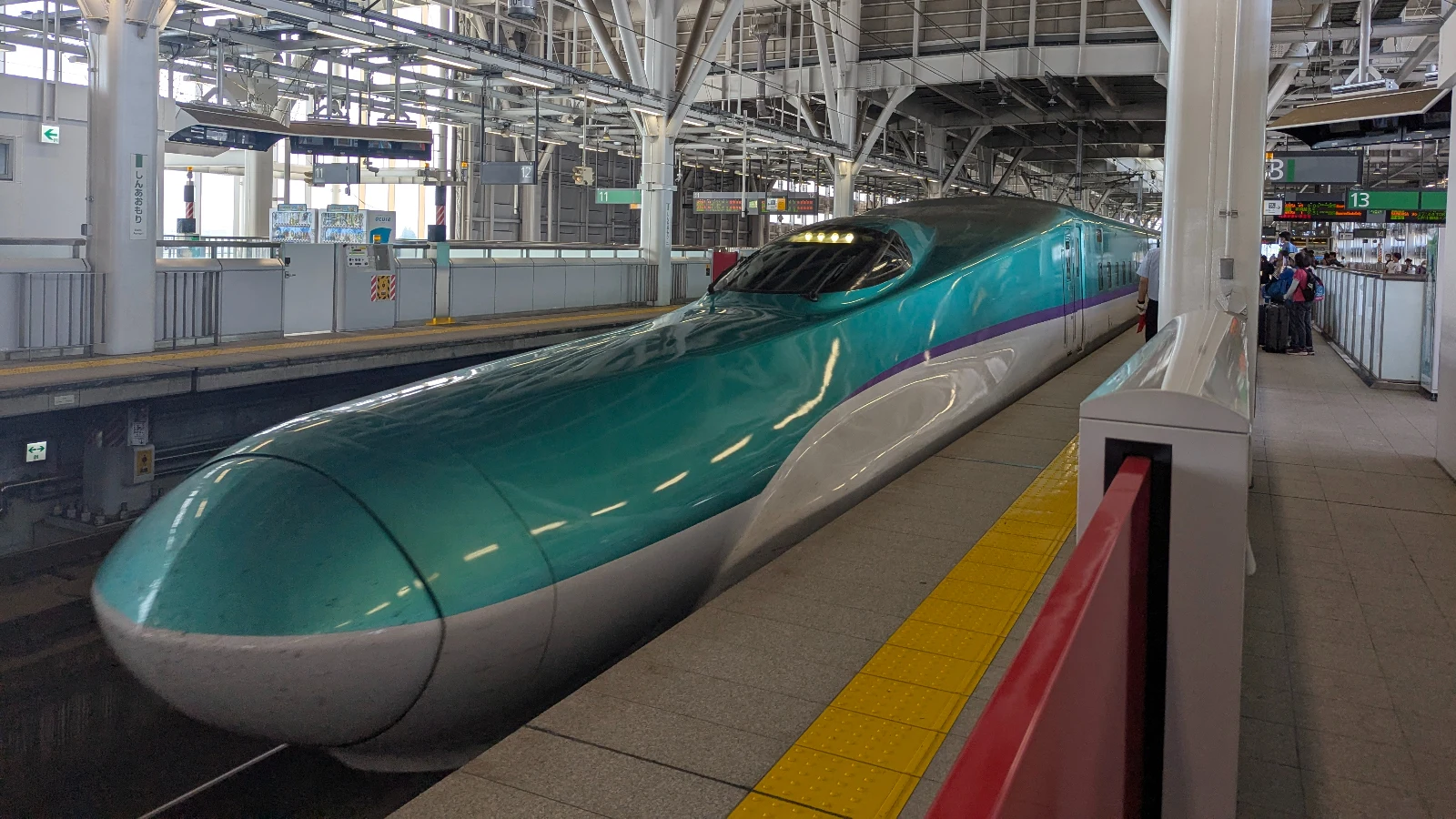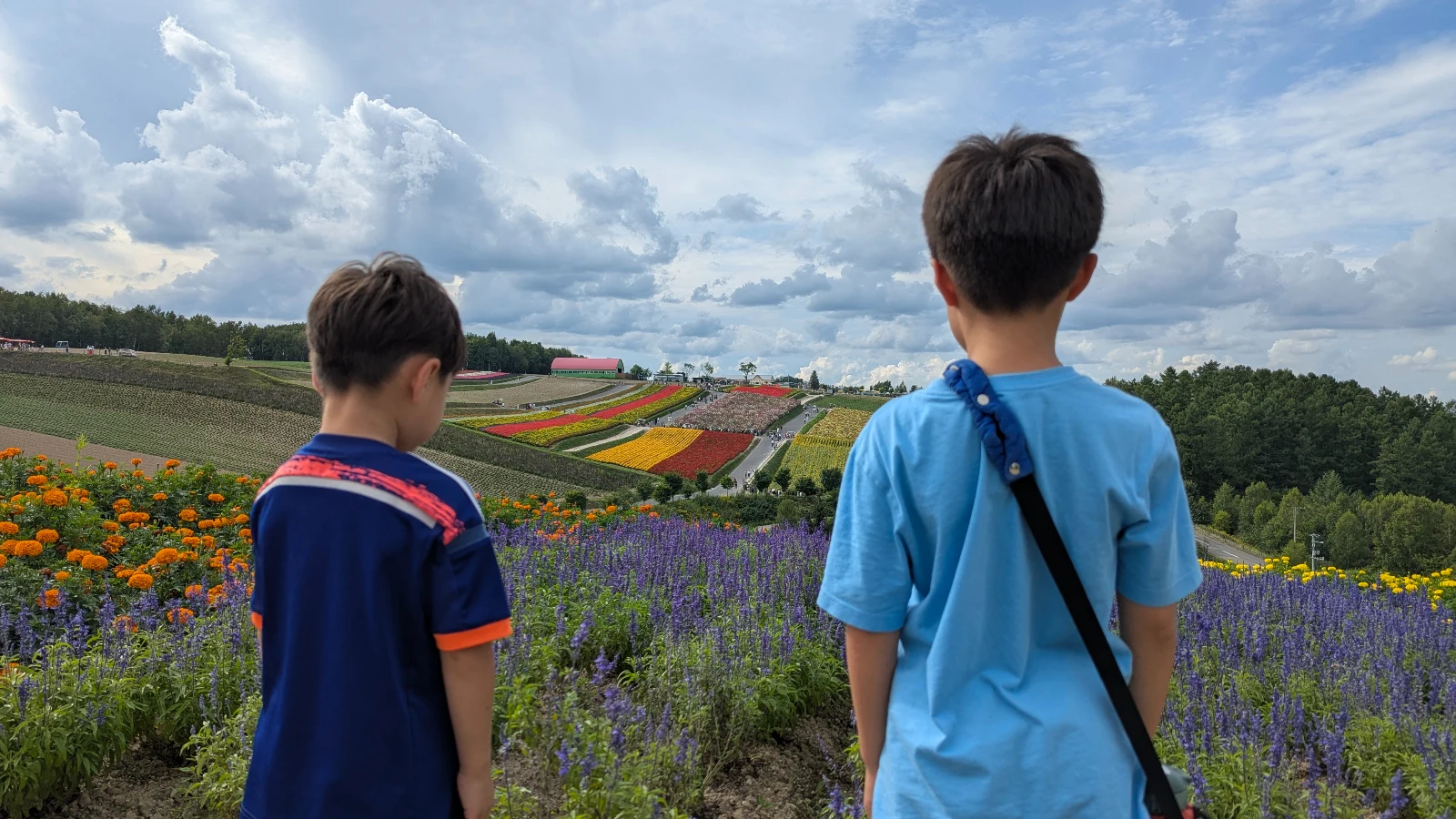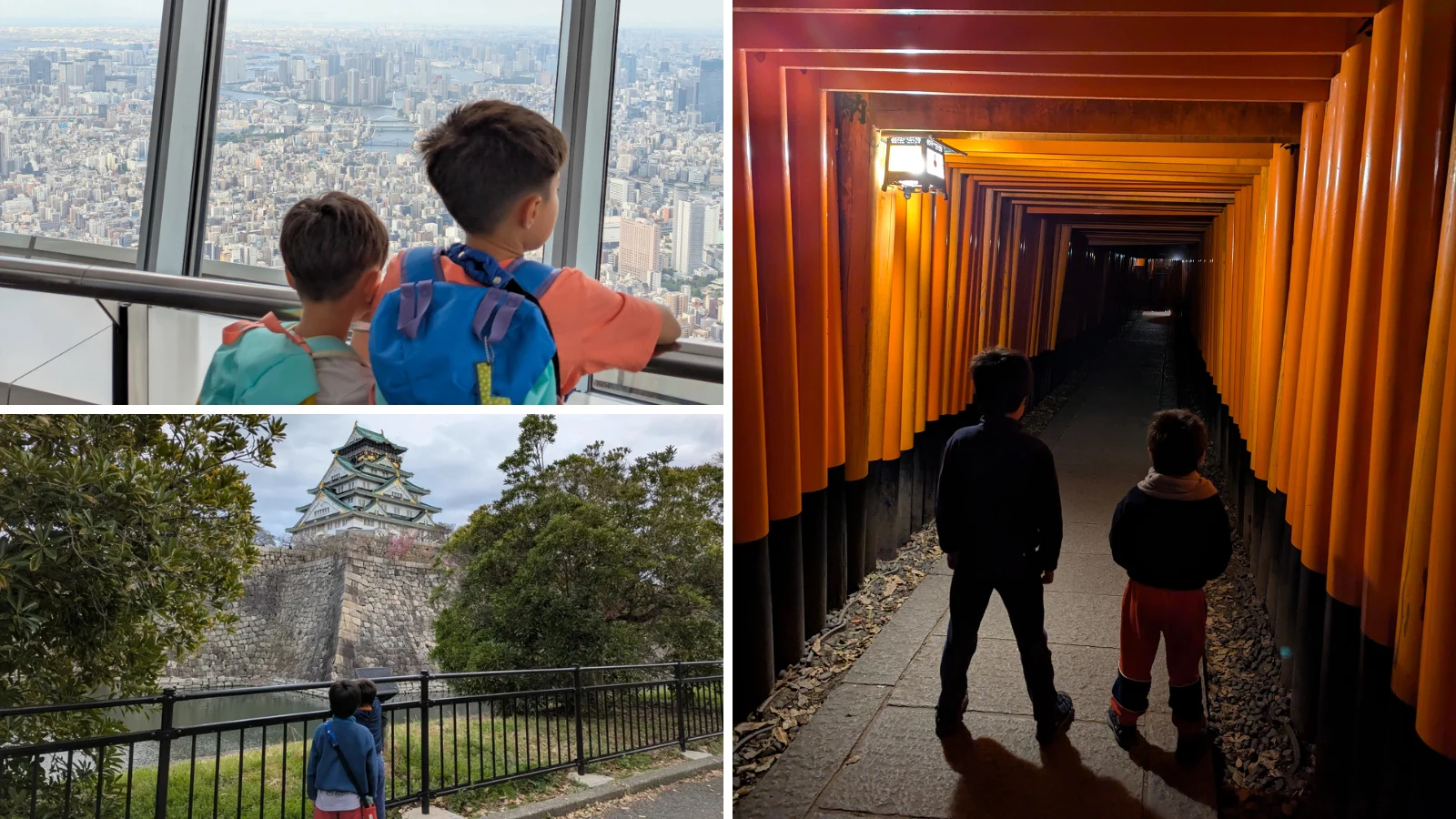
Planning a family trip across Japan? The Japan Rail Pass is one of the best ways for travelers to save money while riding Japan’s famous trains, including the bullet train (Shinkansen). Officially known as the JR Japan Rail Pass, this all-in-one travel pass gives you access to most JR-operated train lines nationwide. In this guide, we’ll help you decide if the JR Pass is worth it for your family, or if a regional pass might be the better choice for your route, pace, and travel goals with kids in tow.
When you’re ready to explore Japan by train, our Japan Train Travel Guide for Families is here to help! For year-round planning, explore our Japan Seasonal Guides for Families, including detailed resources for spring, summer, autumn, winter, and our full Best Time to Visit Japan with Kids guide.. Want more ideas? See our full Ultimate Guide to Family Attractions in Japan with Kids for the best castles, shrines, theme parks, and don’t miss our Ultimate Guide to Family Hotels in Japan, so you can decide which area is best for your family.
Disclaimer: This post contains affiliate links. If you click to purchase, it’s at no extra cost to you… when you book through our links, you help support LuNi Travels and the family guides we create!
Why Book Ahead? It’s quicker, avoids long lines, helps skip language barriers, prevents sold-out attractions, and solves payment issues at places that don’t accept credit cards. *Prices are subject to change.
What Is the Japan Rail Pass for Families?
The Japan Rail Pass (JR Pass) for families can offer major savings, flexibility, and stress-free travel if you’re visiting multiple cities. It allows unlimited rides on most long-distance and local trains, but depending on your itinerary, a JR Regional Pass or individual tickets may work better. Here’s everything parents need to know.
What Does the Japan Rail Pass Cover?
- What It Covers: Unlimited rides on most JR trains, including Shinkansen (except Nozomi and Mizuho), local trains, rapid trains, limited express, some buses, and even ferries like the one to Miyajima.
- Who It’s For: Only available to international tourists with a “Temporary Visitor” visa status.
- Pass Durations: 7, 14, or 21 consecutive days
- Seat Classes: Ordinary Car or Green Car (first class)
- Eligibility for Kids:
- Ages 6–11: 50% discount
- Under 6: Free without a reserved seat
- Each traveler (including children 6+) needs their own pass
- Where to Purchase: Reserve below
|
Duration |
Adult (12+) |
Child (6–11) |
Green Car Adult |
Green Car Child |
|---|---|---|---|---|
|
7-Day Pass |
¥50,000 |
¥25,000 |
¥70,000 |
¥35,000 |
|
14-Day Pass |
¥80,000 |
¥40,000 |
¥110,000 |
¥55,000 |
|
21-Day Pass |
¥100,000 |
¥50,000 |
¥140,000 |
¥70,000 |
7-Day Pass
- Adult (12+): ¥50,000
- Child (6–11): ¥25,000
- Green Car Adult: ¥70,000
- Green Car Child: ¥35,000
14-Day Pass
- Adult (12+): ¥80,000
- Child (6–11): ¥40,000
- Green Car Adult: ¥110,000
- Green Car Child: ¥55,000
21-Day Pass
- Adult (12+): ¥100,000
- Child (6–11): ¥50,000
- Green Car Adult: ¥140,000
- Green Car Child: ¥70,000
Why the JR Pass Works for Families
- Avoids the hassle of buying multiple train tickets during your trip
- Kids love riding the Shinkansen (bullet trains), it turns transport into an adventure
- Flexible if plans change, missed trains can be rebooked for free
- Offers smooth airport connections from Narita and Haneda
- Includes some scenic train routes and ferry rides ideal for slow travel with kids
Things to Consider Before Buying
- Doesn’t cover city subway systems (you’ll need a separate IC card like Suica or ICOCA)
- Only valid for consecutive days, not flexible dates
- For short regional trips, JR Regional Passes or single tickets might be cheaper
- Must be purchased and activated within a specific time frame
Japan Rail Pass vs Regional Pass: Which One Is Better for Families?
Here’s a breakdown based on your family’s travel style:
Choose the Japan Rail Pass if… |
Choose the JR Regional Pass if… |
|---|---|
|
Visiting multiple regions (Tokyo to Kyoto to Hiroshima) |
Staying within a single area (Kansai, Kyushu, Hokkaido) |
|
Doing a round trip or loop across central/western Japan |
Planning slower-paced day trips (e.g., Osaka to Nara) |
|
Want one pass covering most trains (excl. Nozomi/Mizuho) |
Want to save money without paying for nationwide coverage |
|
Traveling frequently over 7–21 days to save on shinkansen |
Focused itinerary in/around Tokyo or another major hub |
Choose the Japan Rail Pass if…
- You’re visiting multiple regions (e.g. Tokyo to Kyoto to Hiroshima).
- You’re doing a round trip or loop across central and western Japan.
- You want the convenience of one pass covering most trains (excluding Nozomi/Mizuho).
- You’re traveling frequently within a 7–21 day period and want to save on bullet train fares.
Choose a JR Regional Pass if…
- You’re staying within a single area like Kansai, Kyushu, or Hokkaido.
- You’re planning slower-paced day trips (like Osaka to Nara).
- You want to save money without paying for a nationwide pass you won’t fully use.
- Your itinerary is focused in and around Tokyo or another major hub.

Regional Alternatives to the JR Pass
While the JR Pass covers the whole country, these regional JR passes offer great value for families staying in specific areas. Booking through our links helps support LuNi Travels at no extra cost to you!
Best JR Passes for Families Visiting Kansai, Hiroshima & Central Japan (Osaka, Kyoto, Kanazawa)
|
Pass |
Main Areas Covered |
Duration |
Sample Price (Adult) |
Best For Families Who… |
|---|---|---|---|---|
|
Osaka, Kyoto, Nara, Kobe, Himeji |
1–4 days |
¥2,800+ |
Want easy, short day trips from one city in Kansai | |
|
Kansai + Hiroshima, Miyajima, Okayama, Kurashiki |
5 days |
¥18,000+ |
Are based in Kansai and want to include a Hiroshima trip | |
|
Kansai + Kanazawa, Fukui, Toyama, Wakura Onsen |
7 days |
¥19,000+ |
Want to add scenic coastal towns to a Kyoto or Osaka trip | |
|
Osaka, Okayama, Hiroshima, Onomichi, Takamatsu, Shimanami Kaido |
5 days |
¥20,000+ |
Want to explore the islands and coastlines of the Seto Inland Sea | |
|
Osaka, Kyoto, Hiroshima, Okayama, Kanazawa, Hakata |
7 days |
¥26,000+ |
Want maximum flexibility in Western Japan (including Kyushu access) | |
|
Nagoya, Takayama, Kanazawa, Toyama, Shirakawa-go |
5 days |
¥19,800+ |
Love scenic trains and want to visit Shirakawa-go and mountain towns |
Best JR Passes for Families Exploring Tokyo & Eastern Japan (Nikko, Nagano, Tohoku)
|
Pass |
Main Areas Covered |
Duration |
Sample Price (Adult) |
Best For Families Who… |
|---|---|---|---|---|
|
Tokyo, Nikko, Karuizawa, Mt. Fuji, Gala Yuzawa |
3 days |
¥15,000+ |
Are staying in Tokyo but want short day trips to snow, mountains, or shrines | |
|
Tokyo, Nikko, Sendai, Aomori, Akita, Fukushima |
5 days (flexible) |
¥30,000+ |
Want flexibility for slow-paced day trips into northern Japan | |
|
Tokyo, Karuizawa, Nagano, Niigata |
5 days (flexible) |
¥27,000+ |
Are planning a ski trip or mountain escape from Tokyo | |
|
Tokyo to Osaka, Kanazawa, Kyoto, Toyama, Nagano (via Hokuriku) |
7 days |
¥30,000+ |
Prefer connecting Tokyo to Kansai via the scenic coastal route |
Best JR Passes for Family Travel in Kyushu & Western Japan (Fukuoka, Kumamoto, Yamaguchi)
|
Pass |
Main Areas Covered |
Duration |
Sample Price (Adult) |
Best For Families Who… |
|---|---|---|---|---|
|
Fukuoka, Beppu, Kumamoto, Kagoshima, Nagasaki |
3, 5, 7 days |
¥24,000+ |
Are exploring hot springs, volcanoes, and cities across Kyushu | |
|
Osaka to Hakata, Okayama, Tottori, Yamaguchi |
7 days |
¥20,000+ |
Want a mix of coast, mountains, and castles from Osaka westward |
Best JR Passes for Hokkaido & Shikoku with Kids (Sapporo, Takamatsu, Nature & Castles)
|
Pass |
Main Areas Covered |
Duration |
Sample Price (Adult) |
Best For Families Who… |
|---|---|---|---|---|
|
Sapporo, Hakodate, Furano, Asahikawa, Wakkanai |
5 or 7 days |
¥22,000+ |
Want to cover long distances across Hokkaido. | |
|
All of Shikoku Island |
3–7 days |
¥12,000+ |
Are discovering castles, cycling, and nature in Shikoku. |
Once you’ve chosen your pass, the next step is planning your city bases. Our family travel guides to Tokyo, Kyoto, and Osaka show you where to stay, what to eat, how to get around, and the best attractions for kids, all organized to make the most of your JR Pass.
How to Choose the Best JR Regional Pass for Kids and Parents
- Stick with one region: Most passes only work in their designated area, make sure your full itinerary fits!
- Match the days: Regional passes are often available in shorter durations (3, 4, 5, or 7 days) and sometimes allow flexible travel within a period.
- Check which trains are included: Some passes cover Shinkansen (except Nozomi/Mizuho), limited express, and rapid trains, others include select buses or ferries.
Luca & Nico’s Tip: If your trip is just around Osaka, Kyoto, and Nara, the JR West Kansai Pass is a total money-saver. But if you’re zooming across the country by bullet train, the full JR Pass is worth every yen.
As you finalize your route, don’t forget accommodation. Our best hotels in Tokyo, Kyoto, and Osaka for Families feature top picks across every budget, all near major JR stations.
FAQs: Japan Rail Pass for Families, Kids, and Budget Travel
Still not sure which pass fits your family best? Here are the most common questions we hear from parents planning train travel in Japan.
A: The Japan Rail Pass (JR Pass) is a discounted all-in-one ticket for foreign visitors, offering unlimited rides on JR trains across Japan. It includes most Shinkansen (bullet trains), local JR lines, and limited express trains. The pass helps families save money when visiting multiple cities.
A: Yes, the Japan Rail Pass is worth it if your itinerary includes long-distance travel between cities like Tokyo, Kyoto, Osaka, and Hiroshima. Over 7, 14, or 21 days, it offers significant savings for frequent Shinkansen users. If you’re staying within one region, regional passes or single tickets may be more cost-effective.
A: Families should get a Japan Rail Pass if traveling across multiple regions. It’s ideal for covering major city routes, but if your trip is focused on just one area (like Kansai or Kyushu), a regional JR pass or individual tickets usually provide better value. Always compare with estimated single ticket costs before deciding.
A: As of 2025, the Japan Rail Pass costs about ¥50,000 (7 days), ¥80,000 (14 days), and ¥100,000 (21 days) for adults in Ordinary Class. Children ages 6–11 pay half price, while kids under 6 ride free if they don’t occupy their own seat. There is no extra family discount, but the child fare applies.
A: Families can buy the Japan Rail Pass online from authorized vendors or at select JR ticket offices in Japan. Buying in advance is recommended, as it’s usually cheaper and more convenient, especially for international travelers arriving with kids.
A: Yes, foreign travelers with Temporary Visitor visas can purchase the JR Pass online before their trip. You’ll receive a voucher by mail, which is exchanged for the pass after arrival in Japan at designated JR counters.
A: The JR Pass covers unlimited rides on most JR-operated transport, including:
– Shinkansen bullet trains (except Nozomi and Mizuho)
– Limited express, rapid, and local JR trains
– Some JR buses and ferries, like the Miyajima ferry
This wide coverage makes it ideal for families exploring multiple regions.
A: Yes, the JR Pass includes most Shinkansen trains, such as the Hikari, Sakura, and Kodama. It does not include Nozomi or Mizuho services on the Tokaido and Sanyo lines, unless you buy a supplementary ticket.
A: No, the JR Pass does not cover Tokyo Metro or Osaka Metro. It only works on JR-operated lines. Families should use an IC card (like Suica, Pasmo, or ICOCA) for local subway rides in big cities.
A: On most Shinkansen trains, each passenger can bring two pieces of luggage up to 30 kg each, with total dimensions up to 160 cm (length + width + height) without a reservation. For oversized bags (160–250 cm), advance reservations are required on the Tokaido, Sanyo, and Kyushu lines. Families can also use luggage forwarding services (Takuhaibin) for convenience.
A: Yes, the JR Pass covers airport transfers. From Narita, families can ride the Narita Express (N’EX) directly into Tokyo. From Haneda, the Tokyo Monorail to Hamamatsucho is included, where you can transfer to JR lines. These routes are comfortable and family-friendly.
A: No, the Japan Rail Pass cannot be shared. Each family member, including children ages 6–11, needs their own pass if they require a seat. Kids under 6 ride free without a reserved seat. JR staff may check passports to verify pass ownership.
A: If you miss a reserved Shinkansen while using the JR Pass, your pass is still valid. Families can board the next train using non-reserved seats, or visit a ticket office to rebook reserved seats if available. This flexibility makes the pass family-friendly.
A: Yes, children under 6 travel free with the JR Pass if they don’t occupy their own reserved seat. Kids ages 6–11 pay half price, while those 12 and older pay the full adult fare.
A: Yes, the JR Pass is often cheaper than buying separate tickets if your family is visiting multiple cities within 7–21 days. For shorter or regional trips, compare costs with local passes or single tickets to decide which option saves more.
A: Families should buy the Japan Rail Pass at least 2–3 months before traveling to Japan, especially during busy seasons like cherry blossom (March–April), summer, and New Year. This ensures your voucher arrives on time and gives peace of mind before the trip.
A: You can exchange JR Pass vouchers at JR ticket offices (Midori-no-Madoguchi) in major airports and train stations, including Narita, Haneda, Kansai Airport, Tokyo, Kyoto, and Shin-Osaka. Bring your passport and voucher, and you’ll receive your activated pass.
A: No, you cannot upgrade a standard JR Pass to Green Car seats. To ride in Green Cars, families must purchase a Green Car JR Pass upfront. Reserved Ordinary Cars are still comfortable, but Green Cars provide extra space and quieter travel for long journeys.
A: If you lose your Japan Rail Pass, it cannot be replaced or refunded. JR staff will not issue a new pass, so families should keep it in a secure holder, lanyard, or wallet. Treat it like a passport, essential and irreplaceable.
Until Next Time…
Choosing the right train pass can make your Japan family trip smoother, cheaper, and way more fun. The JR Pass offers excellent value for multi-city adventures, while regional JR passes are perfect for focused travel. Whether you’re gliding past Mount Fuji on the Shinkansen, hopping from castle to castle in Kansai, or soaking in onsen in Kyushu, there’s a pass to match your journey.
Stay curious, stay adventurous, and keep dreaming!
~ The LuNi Travels Family ~






